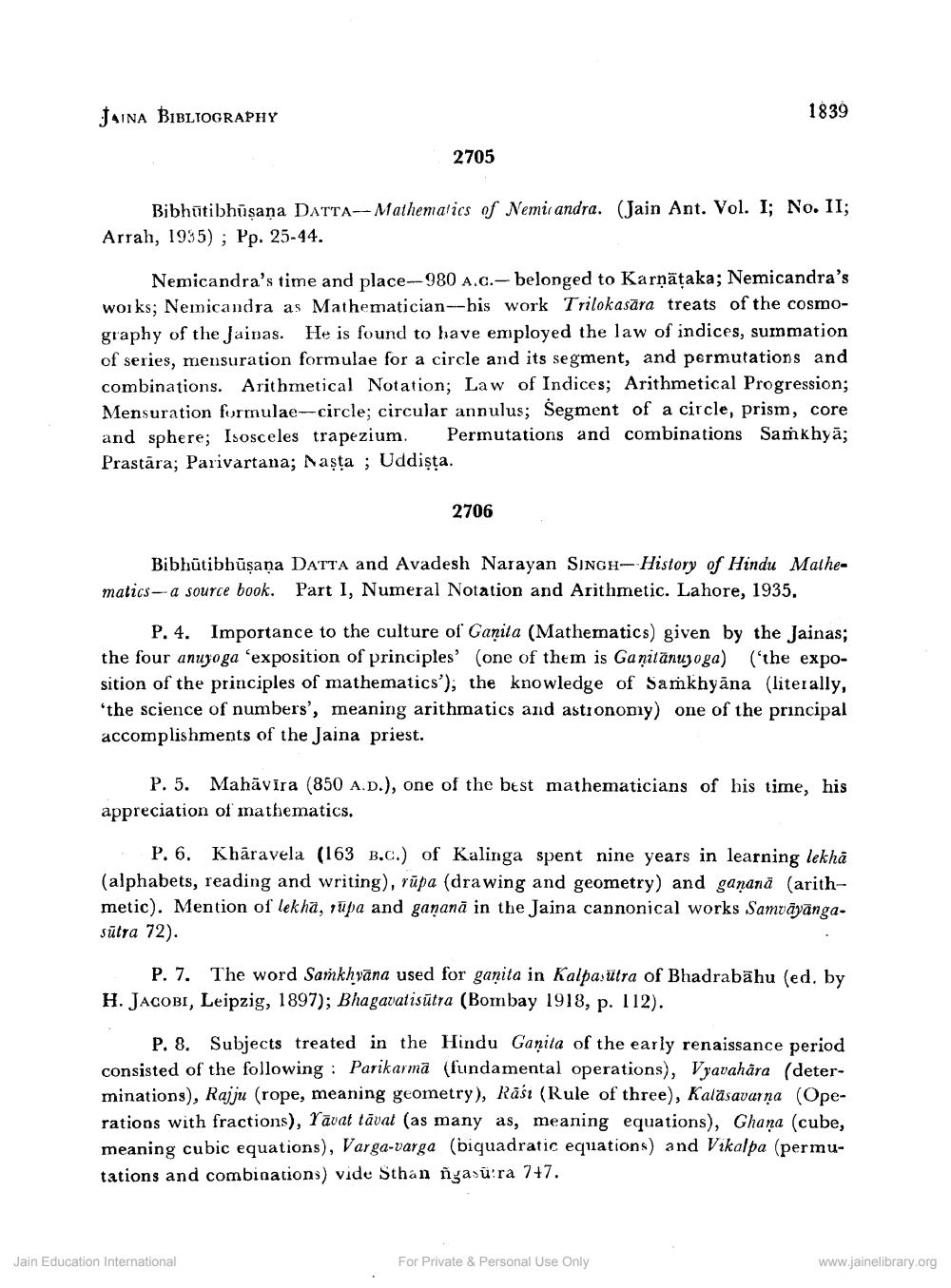________________
JAINA BIBLIOGRAPHY
1839
2705
Bibhutibhusana DATTA--Mathemalics of Nemirandra. (Jain Ant. Vol. I; No. II; Arrah, 1935) ; Pp. 25-44.
Nemicandra's time and place --980 A.C.- belonged to Karņāțaka; Nemicandra's works; Nemicandra as Mathematician--his work Trilokasāra treats of the cosmography of the Jainas. He is found to have employed the law of indices, summation of series, mensuration formulae for a circle and its segment, and permutations and combinations. Arithmetical Notation; Law of Indices; Arithmetical Progression; Mensuration formulae--circle; circular annulus; Segment of a circle, prism, core and sphere; Isosceles trapezium. Permutations and combinations Samkhyā; Prastāra; Parivartana; Maşta ; Uddista.
2706
Bibhūtibbūşana DATTA and Avadesh Narayan SINGH- History of Hindu Mathematics -- a source book. Part 1, Numeral Notation and Arithmetic. Lahore, 1935.
P.4. Importance to the culture of Ganita (Mathematics) given by the Jainas; the four anuyoga 'exposition of principles' (one of them is Ganitānuyoga) (“the exposition of the principles of mathematics'); the knowledge of Samkhyāna (literally, 'the science of numbers', meaning arithmatics and astronomy) one of the principal accomplishments of the Jaina priest.
P. 5. Mahāvira (850 A.D.), one of the best mathematicians of his time, his appreciation of mathematics.
P. 6. Khāravela (163 B.c.) of Kalinga spent nine years in learning lekha (alphabets, reading and writing), rūpa (drawing and geometry) and gañana (arithmetic). Mention of lekha, rüpa and gananā in the Jaina cannonical works Samvāyāngasutra 72).
P. 7. The word Samkhyāna used for ganita in Kalpasutra of Bhadrabāhu (ed. by H. JACOBI, Leipzig, 1897); Bhagavatisūtra (Bombay 1918, p. 112).
P. 8. Subjects treated in the Hindu Ganita of the early renaissance period consisted of the following: Parikarma (fundamental operations), Vyavahāra (determinations), Rajju (rope, meaning geometry), Rasi (Rule of three), Kaläsavarna (Operations with fractions), Pāvat tāvat (as many as, meaning equations), Ghana (cube, meaning cubic equations), Varga-varga (biquadratic equations) and Vikalpa (permutations and combinations) vide Sthan nyasü:ra 747.
Jain Education International
For Private & Personal Use Only
www.jainelibrary.org




